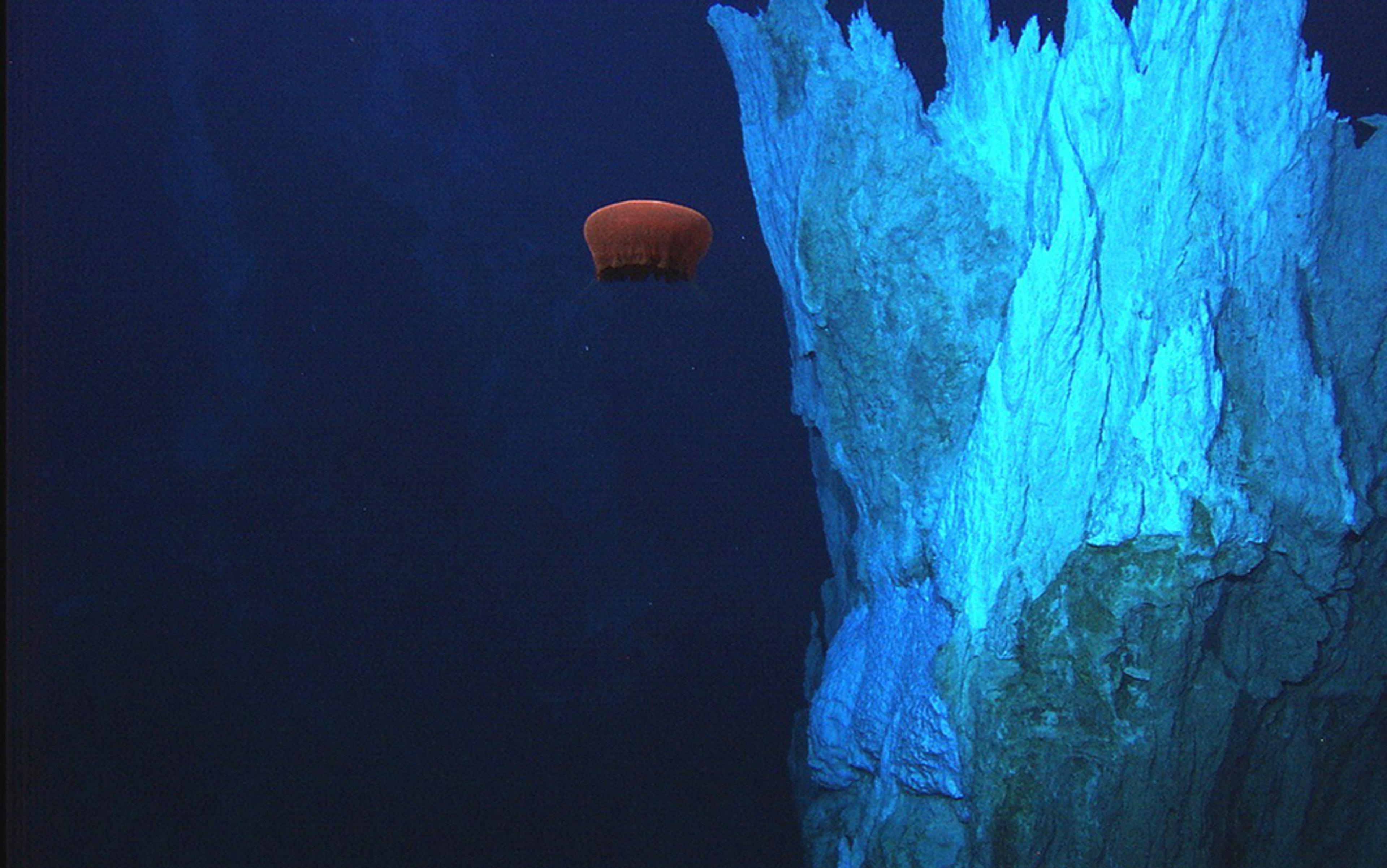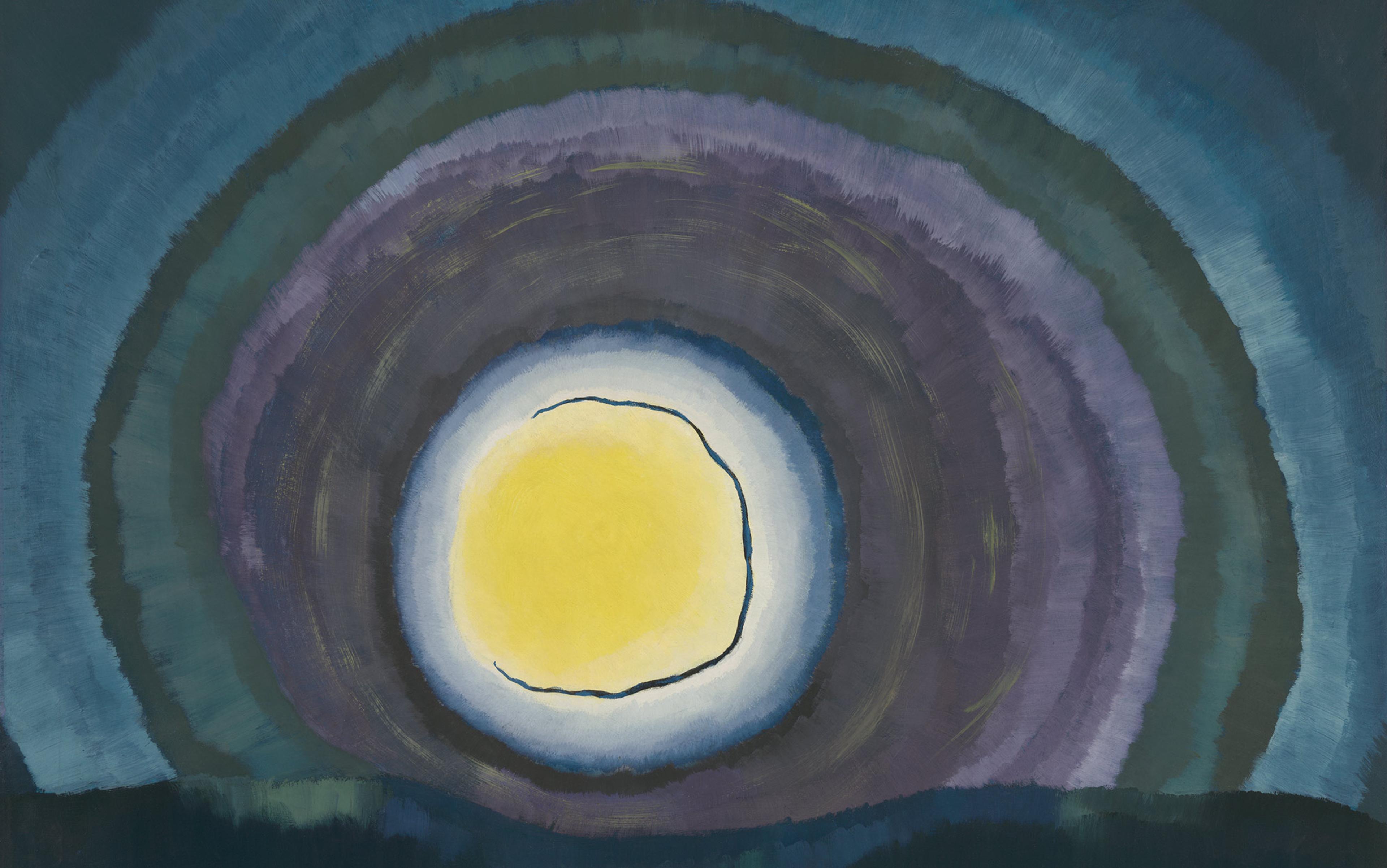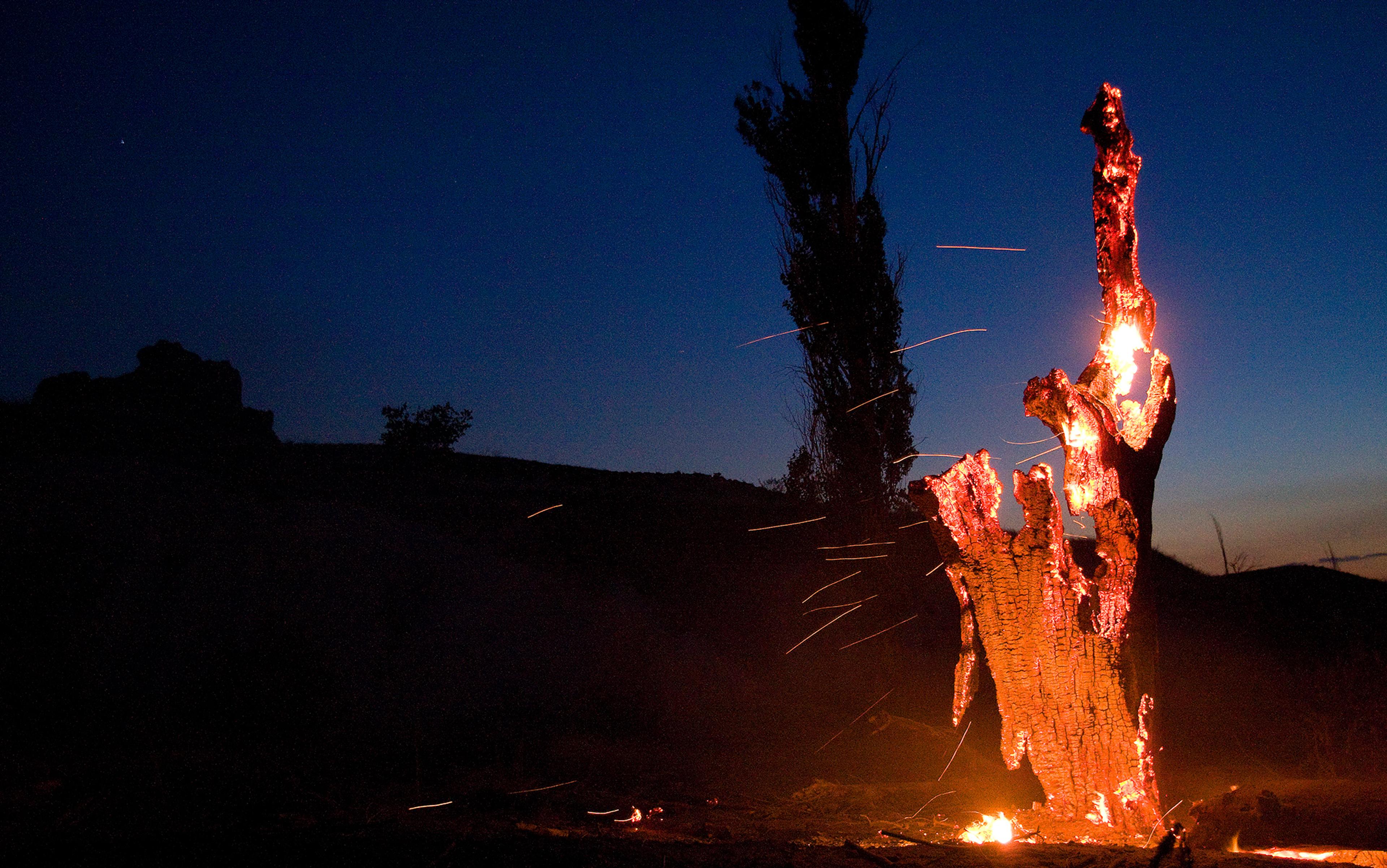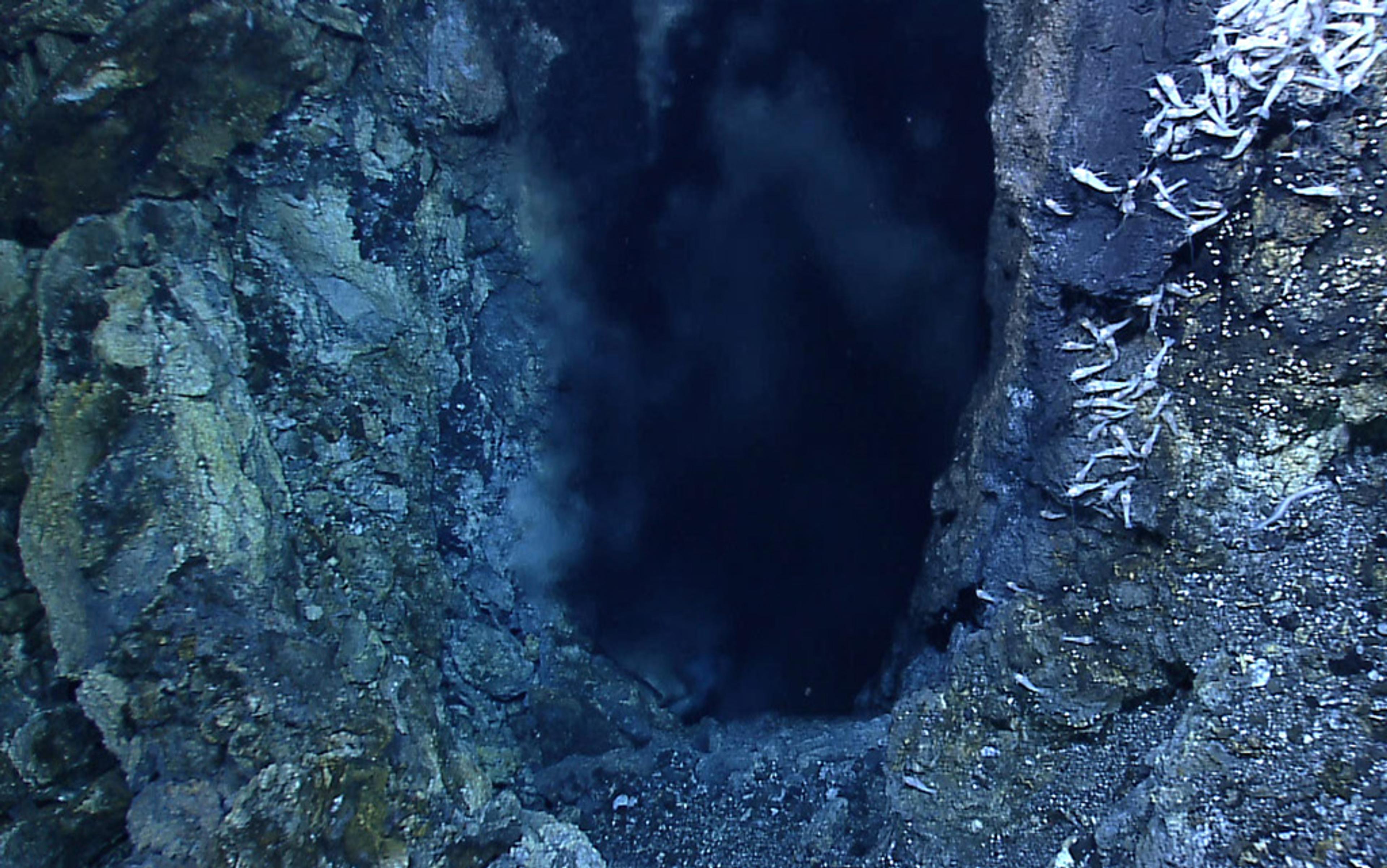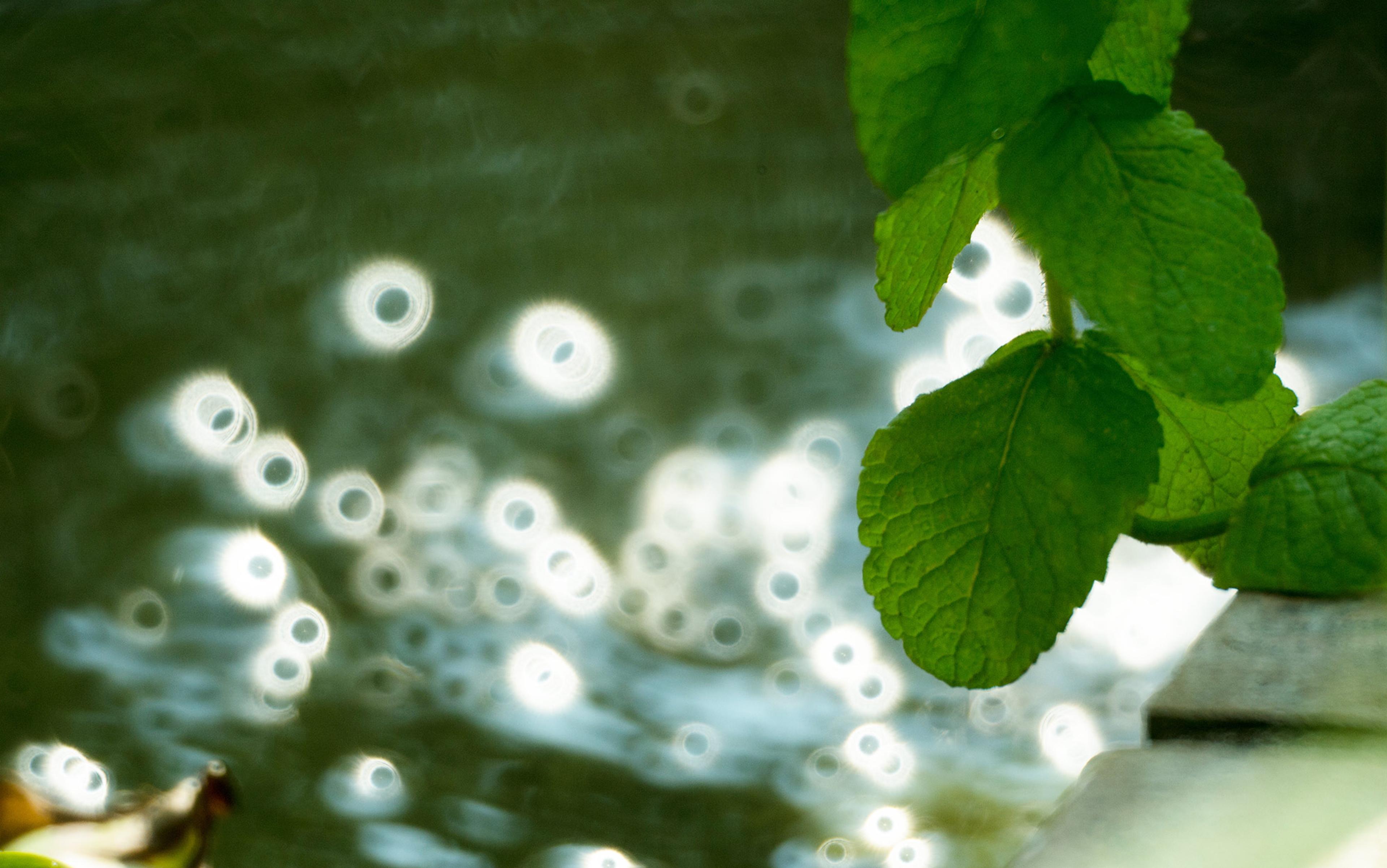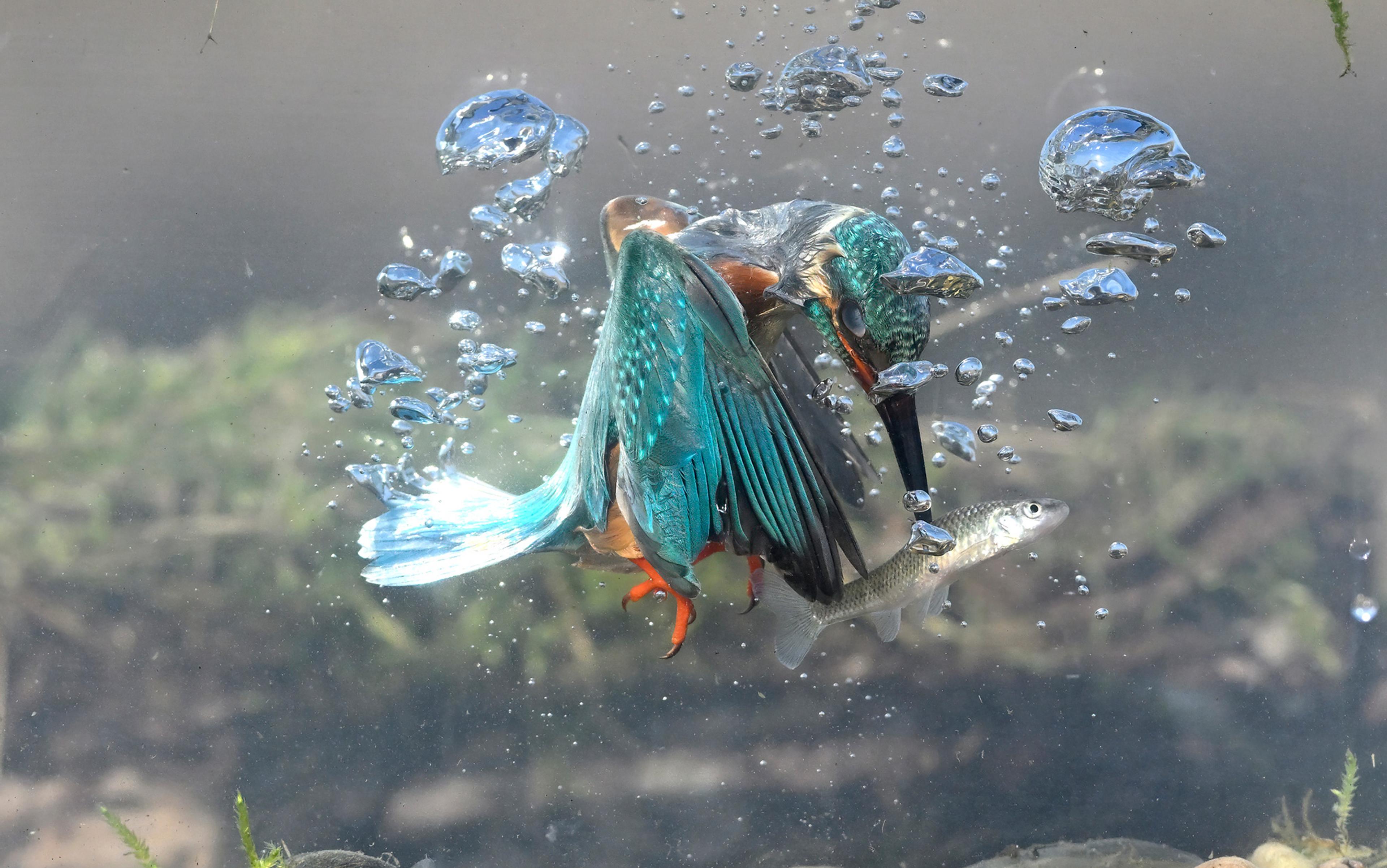Mike Russell found his moment of inspiration on a warm spring evening in Glasgow in 1983, when his 11-year-old son broke a new toy. The toy in question was a chemical garden, a small plastic tank in which stalagmite-like tendrils grew out of seed crystals placed in a mineral solution. Although the tendrils appeared solid from the outside, when shattered they revealed their true nature: each one was actually a network of hollow tubes, like bundles of tiny cocktail straws.
At the time, Russell, a geologist, was struggling to understand an unusual rock he had recently found. It, too, was solid on the outside but inside was full of hollow tubes, their thin walls riddled with microscopic compartments. It dawned on him then that this rock – like the formations in his son’s toy – must have formed in some unusual kind of liquid solution. Russell posited a whole new geological phenomenon to explain it: undersea hydrothermal hotspots where mineral-rich water spewed from Earth’s interior and then precipitated in the cool surrounding water, creating chemical gardens of towering, hollow rocks growing up from the ocean floor.
That was a huge intuitive leap, but it soon led Russell to an even more outlandish thought. ‘I had the epiphany that life emerged from those rocks,’ he said. ‘Many years later, people would tell me the idea was amazing, but it wasn’t to me. I was just thinking in a different realm, in the light of what I knew as a geologist. I didn’t set out to study the origin of life, but it just seemed so obvious.’
What seemed obvious to Russell was that his hypothetical chemical gardens could solve one of the deepest riddles of life’s origin: the energy problem. Then as now, many leading theories of life’s origins had their roots in Charles Darwin’s speculation of a ‘warm little pond’, in which inanimate matter, energised by heat, sunlight or lightning, formed complex molecules that eventually began reproducing themselves. For decades, most origin-of-life research has focused on how such self-replicating chemistry could have arisen. They largely brushed aside the other key question, how the first living things obtained the energy to grow, reproduce and evolve to greater complexity.
But in Russell’s mind, the origin of life and the source of the energy it needed were a single issue, the two parts inextricably intertwined. As a geologist (now working at NASA’s Jet Propulsion Laboratory in California), he came at the problem with a very different perspective from his biology-trained colleagues. Undersea chemical gardens, Russell realised, would have provided an abundant flux of matter and energy in the same place – a setting conducive for self-replicating reactions, and also a free lunch for fledgling creatures. It has long troubled researchers that the emergence of life seems to rely on highly improbable chemical events that lead toward greater complexity. By considering energy first, Russell believed he could address that. In his view, the emergence of biological complexity was not improbable but inevitable.
For nearly three decades, Russell’s energy-first perspective was mostly met with skepticism. Now the attitudes are shifting: recent discoveries in geology, genomics and molecular biology lend new credence to his hypothesis. With that shift comes a new perspective on the definition of life, and a bracing challenge to its privileged place in the cosmos. Russell sees the emergence of life rooted in the same principles that govern the emergence of galaxies, planets and tornados. Life, he argues, is not a freak occurrence but a unified part of a sweeping physical narrative, ‘merely one more part of the continuum of energy flow in the expanding Universe’.
No direct evidence remains of life’s first appearance on this planet, but hidden in our genes and biochemistry is the story of our creation. The discovery of DNA’s structure in 1953 and the subsequent rise of molecular biology gave scientists a magnifying glass with which they could start to read that story. All the evidence points to a single common ancestor, a creature that managed to survive and multiply on the hellish primordial Earth some 3.5 billion years ago. From this organism sprouted the entire tree of life.
With the focus on DNA came a corresponding fixation on the chemistry that might have led to self-replicating entities, rather than on the energy needed to generate them. And so the search for life’s origin became largely a search for the origin of an ancestral molecule to DNA. By the 1960s, researchers began to converge on a plausible sequence of events. According to this story, life began in an ‘RNA world’, in which RNA, a chemical cousin of DNA, both stored genetic information and helped early life perform the chemical reactions it needed to survive. RNA’s ability to hold information was already well-established. The RNA-world hypothesis received a substantial boost in 1978, with the discovery that RNA can, in fact, carry out chemical reactions alone, without proteins or any other molecular help. RNA molecules seemed to constitute a tidy chemical system that could build and replicate itself.
From there, researchers speculated, RNA became encapsulated in bubbles of lipids, the same oily molecules that compose the membranes of modern cells. Because lipid bubbles can naturally grow and divide, the best RNA replicators would persist and proliferate. Eventually, some of these primitive entities chanced on the ability to code for simple proteins, which then allowed the development of metabolic pathways to capture energy from the environment. Eventually, genetic information storage was transferred to DNA, and life as we know it emerged.
But within modern organisms there is another clue to life’s origins, one that is more obscure than DNA but just as universal – the way cells harvest energy by shuffling around electrically charged molecules. This process goes by the mouthful ‘chemiosmosis’, and was first proposed in 1961 by the eccentric British biochemist Peter Mitchell. Chemiosmosis lacks the coded rigour of DNA, but that primal messiness might be exactly what makes it so revealing.
Energy, Russell thinks, must have preceded anything resembling DNA or RNA, so the origin of chemiosmosis could help to reveal how the first organisms arose. Chemiosmosis takes place deep in our body’s cells, most of which harbour hundreds or thousands of microscopic structures called mitochondria. The mitochondria extract the chemical energy from food and, with the help of the oxygen we breathe, convert it into a molecule called adenosine triphosphate (ATP). Just as much as DNA, ATP is the molecule of life; it is the currency we spend to grow, move or think. Every second, each of our body’s 40 trillion cells use around 10 million molecules of ATP. We can turn over our entire body weight in this special substance every day.
The flow of energy across the membranes of the mitochondria occurs through a molecular Rube Goldberg contraption so elaborate it almost defies comprehension. A chain of dozens of proteins, each consisting of thousands of atoms, traps high-energy electrons (derived from food), and passes them down the chain like a bucket brigade. The movement of electrons through the proteins in the chain creates an electrical current, which is used to trap massive numbers of protons between the mitochondrion’s inner and outer membranes. The only escape for the protons is through another remarkable protein called ATP synthase. It is an engineering miracle, a nanomachine complete with a molecular rotor, stator and driveshaft, which, as protons fall through it, spins like a waterwheel – hundreds of times per second – to produce ATP.
No replication-focused origin-of-life theory has yet provided good explanation for the parallel origin of the elaborate machinery of chemiosmosis. But Russell argues that his chemical gardens would provide a natural environment for the emergence of molecules that harvest a proton gradient for energy. Earth’s ancient ocean was probably acidic, meaning it had a high concentration of protons. Water bubbling up through hydrothermal vents, in contrast, is normally alkaline, meaning it has fewer protons. This difference would have created a natural proton waterfall spilling from the ocean into the rocks, the tiny protons percolating through the mineral labyrinth.
Energy from the proton gradient, Russell believes, enabled simple reactions by linking electron transfer to proton flow. Then, as proteins evolved, some cells began to harness the proton flow with a primitive version of ATP synthase. Genomic data support this sequence of events. The ATP synthase molecule is similar in every organism on Earth, but the protein chain used to trap protons is not. The disparity implies that the first organisms evolved to harness an existing proton gradient before they developed the means to create one themselves. Russell’s chemical gardens could have provided such a gradient. Later organisms evolved proteins that could produce a gradient of their own, in the process erasing the obvious evidence of our place of origin.
At first, ocean vents were simply sites of geology, gases and dissolved minerals bubbling up to form rocks. But in those rocks, something unusual began to happen
While Russell’s theory largely languished on the scientific fringe, it attracted the attention of the prominent biologist Bill Martin, a displaced Texan at the University of Dusseldorf. From Martin’s perspective as an evolutionary biologist, it made perfect sense that chemiosmosis came first, before RNA. ‘When you look at a group of organisms – in this case all life as we know it – and there is a property that is present in all forms, you put this property in the common ancestor. And that common property is harnessing an ion gradient,’ he says.
In a series of papers dating back to 2003, Russell and Martin teamed up to explore the biological implications of the chemical-garden scenario. In their fleshed-out version of the hypothesis, life began not as a free-roaming creature, feeding off natural organic molecules drifting in the ocean, but as a tenant that made its own food in the mineral compartments of underwater rocks. At first, ocean vents were simply sites of geology, gases and dissolved minerals bubbling up to form rocks. But in the microcompartments of those rocks, something unusual began to happen. The carbon dioxide in the ocean reacted with the hydrogen from the vents. Under typical conditions, this reaction wouldn’t occur, but the minerals in the compartment walls, rich in iron and sulfur, coaxed this reluctant partnership. These reactions created small organic molecules such as acetyl-CoA, one of the most ancient metabolic pathways ever discovered.
The expanded chemical garden hypothesis addressed another key question about the origin of life: how molecular building blocks become concentrated enough to react and link up with each other. Russell predicted there would be a temperature gradient across ocean-vent rocks – cool on the outside, warm on the inside. That gradient would have promoted a convective process called thermophoresis, which traps larger organic molecules in the compartments, encouraging the formation of sugars, amino acids, lipids and nucleotides – the building blocks of life. At the intense temperature and pressure of the deep sea, such building blocks inevitably began to link up, forming larger and more intricate molecules.
In Russell and Martin’s view, it was only then that genetic elements started to form, taking advantage of a concentrated supply of complex organic molecules. Self-replicating chemical systems could diffuse from one rock compartment to another by passing through micropores. And since the porous rocks would constantly form new compartments, there should have been ample territory to colonise. From there emerged the first cells. To Russell, this is the only logical explanation: ‘The emergence of life is a geological issue. If you don’t look at it that way, you make up your own initial conditions.’
The huge problem with Russell’s clever explanation was that the chemical gardens – his inferred crucibles of life – seemed to exist only in his imagination. Ocean-bottom mineral structures of a somewhat similar kind had been discovered in 1977, and even sparked discussion as a possible site for the origin of life, but the idea was quickly batted down because of their violent volcanism and short lifespan. Stanley Miller, the world’s most eminent origin-of-life researcher at the time, told Discover magazine in 1992 that the so-called hydrothermal vent theory was ‘a real loser. I don’t even understand why we have to discuss it.’
Then, one winter evening in 2000, a team of geologists lowered the remote-controlled vehicle Argo II into the calm waters of the Atlantic to survey an underwater mountain range. It descended past spiral corals and clouds of krill, past the photic zone where the ambient glow of the Sun diffuses to blackness, past the half-mile mark on the depth gauge. Suddenly, the vehicle’s lamps illuminated something utterly unexpected: a cluster of otherworldly pinnacles rising from the ocean floor, as tall as 20-storey buildings. Shimmering plumes of heated water billowed from their tops like smoke from chimneys. This strange landscape turned out to host an exotic ecosystem of snails, crabs, worms and shellfish, sustained by microbes that convert raw elements from the inner Earth into life without any help from the Sun. This field of hydrothermal vents, dubbed the Lost City, conformed almost exactly to Russell’s 1983 predictions. His chemical gardens had been found.
It now seems plausible that high-temperature life came first and surface organisms, adapted to more modest temperatures, evolved later
Over the next 15 years, more data began to pile up in support of life’s origin in a chemical garden. In one major change, most researchers are now convinced that life’s universal ancestor was an autotroph – meaning it made its own food from inorganic matter – just as Russell and Martin had predicted. A 2015 genomic study provided the most convincing evidence to date. An analysis of nearly 40 genes strongly suggested that the most ancient microbes generated methane from carbon dioxide and hydrogen. This analysis dovetails with geological work showing that methane formed by biological processes is the earliest organic compound found in ancient rocks.
Other data support a hot, rocky start for the first organism. For decades, most biologists thought that life could survive only in the relatively narrow temperature bands of the Earth’s surface. But by the mid-2000s, evidence had accumulated that the majority of organisms perched on life’s earliest evolutionary branches are actually heat-loving. It now seems plausible that high-temperature life came first and surface organisms, adapted to more modest temperatures, actually evolved later. Furthermore, some of the few proteins shared by all living things, from microbes to mammals, contain tiny clusters of minerals at their core, implying that early life had an intimate relationship with rocks. Russell’s ideas about energy-driven life emerging from a mineral cocoon no longer seems so iconoclastic.
But there are even deeper reasons to think that life might have originated in underwater chemical gardens. At first glance, life seems to defy the laws of physics. The tendency of the Universe is to progress from order to disorder. Rooms become messy, fortresses turn to ruins. This disorderliness, known as entropy, is formalised in the Second Law of Thermodynamics: any process must increase the overall entropy of the Universe. Change ‘spills what cannot be gathered again’, as John Updike wrote in his unlikely poem ‘Ode to Entropy’. Taken to its logical conclusion, the Second Law dictates that when all matter and energy are totally evenly distributed, nothing ever can happen again – what Updike calls the ‘seal on extinction’.
Life rebels against entropy, however. The Austrian physicist Erwin Schrödinger, in a visionary set of 1943 lectures collected into the influential book What is Life? (1944), recognised this apparent violation of the Second Law. He argued that life had found a way to harness energy to decrease entropy locally while increasing it globally. This local decrease is analogous to the inside of a refrigerator, which uses electricity to cool itself, releasing a greater amount of heat from its coils in the back. (This is why an open fridge cannot cool an apartment.) Life is similar – it uses energy to locally organise itself, releasing a large amount of waste as heat in the process. Schrödinger pointed out that life survives by ‘continually sucking orderliness from the environment’.
Thinking of life this way, in terms of order arising out of disorder, makes it seem overwhelmingly improbable. Whether life is a cosmic fluke, or is etched into the laws of nature, is a defining question in astrobiology. The British astronomer Fred Hoyle compared the spontaneous appearance of life from a jumble of molecules as comparable to the chance that ‘a tornado sweeping through a junkyard might assemble a Boeing 747’.
Here, too, Russell sees things very differently. The origin of life is not an order-from-disorder problem, he argues: it’s actually an order-from-order one. ‘You have to have a well-organised initial state to get any kind of organised state from there,’ he said. In other words, geological order came first, and the relevant question is, how did biological complexity emerge from geological complexity? Robert Hazen, a geologist at Carnegie Mellon University, considers this insight one of Russell’s major contributions to evolutionary biology: ‘The origin of life – the origin of complexity – cannot occur without a relatively complex environment.’
Russell’s energy-driven model helps to explain where that complexity came from in the first place. Nearly a century ago, scientists began to realise that non-living systems could behave as self-organisers that ‘suck orderliness’ from their environment. That notion was formalised in the 1960s by the Russian chemist Ilya Prigogine, who called such self-organising systems dissipative structures. Such structures are easy to find: simply pull the plug in a bathtub and watch a whirlpool form. Driven by gravity, the water molecules spontaneously swirl into a pattern that is more ordered than their previous haphazard collection. Because it makes the water drain more quickly, the whirlpool increases global entropy by making a lower-entropy local structure. If the tub is continually filled at an equal rate – say by running the shower – the whirlpool will persist indefinitely. When energy can continuously flow through a system, interesting things begin to happen.
Life belongs to that class of systems open to energy flux, Russell notes, and thinking about life this way redefines what it is.
Biological information systems – the codes needed for life to reproduce – cannot just spring into existence
For the past half-century, origin-of-life research has been dominated by scientists who elevated chemistry above energy as the primary puzzle to be solved. This perspective stems in part from a seminal experiment in 1953 by Stanley Miller, then a graduate student at the University of Chicago. He connected two round flasks, one containing water to mimic the Earth’s ancient oceans, the other containing a mix of simple gases thought to be in the early atmosphere. Miller then sent sparks of electricity flickering inside the glass – a lightning storm in miniature. Over the course of a week, the liquid turned yellowish, then pink, and finally a deep red. Inside the flask he found a rich brew of organic compounds, including amino acids. He solidified air into the building blocks of life.
Soon after, Miller was on the cover of Time magazine, and tabloids ran stories about synthetic organisms crawling out of the lab. A number of chemists competed to create life, or at least the chemicals of life, from scratch. Despite some intriguing progress, though, the researchers who study complexity seem to agree that the primary energy sources in these experiments – whether lightning or ultraviolet radiation – are too erratic or too destructive to create complex biomolecules. The gradients present in the protected haven of the chemical gardens, on the other hand, seem to be just right.
‘This is why I like the hydrothermal vents idea: you get very clear energy potential gradients and chemical gradients. And gradients generate complexity,’ said Eric Karsenti, who studies self-organisation in biological systems at the European Molecular Biology Laboratory in Heidelberg, Germany. Without energy gradients, even if all the right ingredients are in the right place for an RNA world, life cannot just appear. The implication is that biological information systems – the codes needed for life to reproduce – cannot just spring into existence. ‘The key to the beginning of living systems is to generate this energy storage conformation system, and to use the same energy machine to build the storage of information through DNA and RNA,’ Karsenti explained. ‘I would say energy came first.’
Russell frames the thought in more familiar terms: ‘My Prius can do without its computer, but it can’t do without its engine.’
In any origin-of-life theory the truth is hidden by billions of years of history, but Russell’s focus on energy flow turns that obstacle into something that is almost poetically obscure. ‘I don’t like the term “origin”,’ he said. ‘We really ought to call it “emergence”.’ If you think of life in terms of energy, then life’s emergence connects back to the very source of energy flow, the Big Bang itself. At that moment, Russell wrote in a 2013 paper, the Universe was at ‘nearly infinite thermodynamic stress’. The evolution of the cosmos has been propelled by the dissipation of that stress. Paradoxically, the most efficient way to get rid of the stress – to advance from order to disorder – is to create transient but ordered systems, akin to the whirlpool in the bathtub or a tornado in a storm. ‘All order in the Universe,’ Russell and his co-authors concluded, ‘is presumably born of this paradox.’
Life is one such oasis of order. After the Big Bang, the Universe could have, in principle, expanded into an even distribution of matter and energy. If that were the case, nothing could have ever happened, and nothing – including life – could have ever formed. But instead, something happened. Quantum fluctuations in the structure of space, perhaps, disrupted the balanced distribution of matter and energy, and set into motion a cosmic accumulation of structure and organisation. Particles clumped together; minute differences in gravitational fields attracted other particles; soon there were regions of matter bound by gravity, and enormous expanses of relatively empty space.
‘It’s not what life is. It’s what life does’
Some of that matter collapsed to form stars. Disks of gas and dust around those stars accreted into planets with molten cores, ceaseless tectonic shifting, and roiling volcanic activity. Hydrothermal convection arose from this disequilibrium, driving serpentinisation, the mineralogical process that forms hydrothermal vent structures – Russell’s chemical gardens. On one planet, at least, those mineral towers channelled the disequilibrium of the planet’s geology into chemistry, and complex proto-metabolic systems eventually led to life. In this view, life’s origin isn’t an origin at all, but just another step in a sequence of events set in motion by the Big Bang.
Thinking of life in terms of energy challenges the very definition of life. ‘It’s not what life is,’ Russell said. ‘It’s what life does.’ After all, you replace each atom in your body, on average, every few years. In that sense, life isn’t a thing so much as a manner of being, a restless fit of destruction and creation. If it can be defined at all, it is this: life is a self-sustaining, highly organised flux, a natural way that matter and energy express themselves under certain conditions.
Russell’s conception of our species, along with every other living thing, as mere energy patterns, ultimately born of rogue fluctuations in the Universe’s infancy, might make us feel a little less special. Then again, it might also make us feel a little less alone. We are descendants of an unbroken energetic lineage from the dawn of time. Darwin intuited this deep link between biology and physics, speculating that it is ‘probable that the principle of life will hereafter be shown to be part, or consequence, of some general law’. And, he might have added, there’s grandeur in this view of life, too.
